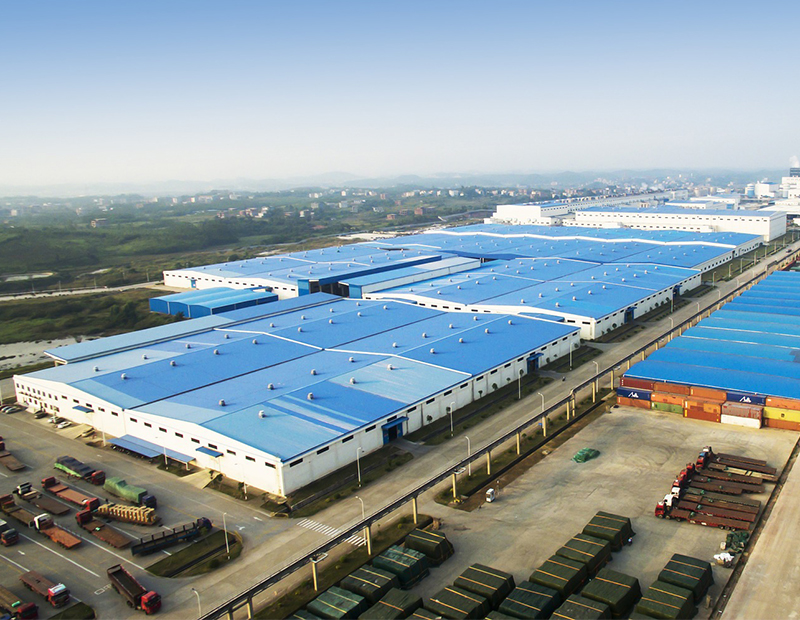Buildings of Tomorrow: Future Warehouses
For at least 15 years, developers have been promoting sustainable ‘green’ warehouses. Researchers expect demand for these facilities to rise, as well as for net-zero carbon buildings.
Amid this prolonged uncertainty, everyone agrees that the pandemic’s impacts are yet to be fully seen. Nine months in, the health crisis is about to trigger a global economic crisis, and real estate sectors are reacting differently—some trends, that were already underway, are accentuated, while others are disrupted completely from their original course. One of the winning industries in COVID-19 times is industrial.
The industrial sector is thriving, while also highlighting the value of supply chains resilience, and implicitly, the need for warehouses. Although the industry points to a certain future, these logistics buildings are in for a change, and a report issued by JLL analyses four megatrends that were obvious even prior to the health crisis—demographic change, technological change, urbanization and sustainability.
Demographic change
The world’s population is growing, albeit at a decelerating rate. The forecast points to an increase from 7.7 billion in 2019 to 8.5 billion by 2030. But growth is uneven—a strong concentration in population growth is anticipated for some countries in sub-Saharan Africa, India, Indonesia and Pakistan. Europe’s population is forecast to decline—from 747.6 million in 2020 to 734.7 million by 2030. In the U.S., the year 2030 marks a demographic turning point where one in every five Americans is projected to be of retirement age, and by 2034 the U.S. Census projects that older adults will outnumber children for the first time in U.S. history.
The report’s authors also highlight the aging population, therefore an increase in the median age. This increase will impact the labor force, which will grow at a slower rate than the population overall, while in some countries it is projected to decline. In other words, finding labor for logistics will become increasingly challenging.
To solve the labor issue, automation and the use of robots will likely accelerate. This acceleration will, on one hand, reduce demand for some types of warehouse labor, while on the other, it will increase demand for people with higher skills. In turn, people with higher skills will likely push developers, investors and companies to provide warehouses with a different set of building features and amenities, something the researchers called the “human-centric warehouse” approach.
Technological change
Changes were already reshaping the warehouses, point out the authors, referring to the introduction of Automated Storage and Retrieval Systems. These days, the pandemic has boosted e-commerce and generated demand for a range of different types of warehouses. We are witnessing the Fourth Industrial Revolution, driven by a mix of technologies, some established, some emerging or pioneering.
JLL analysts highlight three main technologies that have the greatest impact on the warehouse component: Artificial Intelligence—the force behind automation, autonomous machines, robots and “smart warehouses”; The Internet of Things—the foundation for “smart” warehouses and logistics; and 3D printing or additive manufacturing—with the mention that this one, in particular, will be more significant in select industries. Advancements in technologies used in warehouses will also mean an increased demand for power, which will become a critical location consideration.
Looking at each of these technologies separately, the rise of automation and robots, not just in warehousing but across industries and geographies, has garnered a lot of attention in the scientific world. The logistics sector is particularly inclined to adopt automation and robots due to the nature of many of its activities and jobs, characterized by a predictable routine. While these technologies will advance considerably in the warehousing industry, autonomous lorries and drones will need more time to materialize as there are still plenty of legal and regulatory barriers.
READ ALSO: An Industrial Developer’s Insights on the Pandemic’s Impact
The IoT, in connection with “big data,” is the environment that will improve warehouse operations and productivity as it will be able to suggest better utilization of equipment and space in real time while minimizing risks to workers. The technology is still in the early stages, used by some companies such as DHL, but its adoption rate is modest, and the report’s authors believe it will be slow to advance.
The 3D printing industry is evaluated at roughly $10 billion, including printers and related services. So far, the technology has been used in niche applications in several sectors such as aerospace, automotive and medical instruments, as well as in the manufacture of prototypes and specialist components. Its impact on warehouses could translate into a reduced need for inventory, with some items being printed as and when needed rather than held in stock.
Even the traditional leasing method is likely to change. As the “sharing economy” is becoming more prevalent, on-demand warehousing is gaining traction. This new type of service offers a wide range of spaces varying from basic storage to more complex ones, including the use of automated solutions. They are acquired on a pay-per-use basis or by subscription, allowing companies to access facilities (depending on availability) wherever and whenever they need them.
Urbanization
The number of people choosing to live in cities and urban areas is on an upward trend and this makes urbanization a subset of demographic change. While COVID-19 has been touted as a slowdown in or even a reversal of, urbanization, JLL’s analysts believe that the megatrend will continue long-term. COVID-19 and the associated lockdowns have been behind the surge in online spending in many countries, and many forecasts suggest an acceleration in online growth.
Consequently, this has put pressure on demand for logistics services and buildings in cities. Yet, land availability is scarce, due to competition from higher-value land use, such as housing. This imbalance between logistics supply and demand benefits real estate developers and investors as they are likely to underpin stronger rental growth than has been achieved by traditional big-box logistics properties. In cities where the availability of industrial land is limited and land values are high, a new trend is taking shape—the so-called “industrial intensification” by the development of multilevel buildings, where the upper levels are serviced by cargo lifts and multistory buildings, which provide direct vehicle access to the upper floors.
READ ALSO: Clark Machemer’s Development Journey With the Titans
Operators face new challenges, in sourcing appropriate and affordable facilities in and around cities to their customers efficiently and effectively. In addition, they also have to juggle with regulations designed to minimize the adverse impacts of freight transport, such as congestion air pollution, carbon emissions and noise. These include restrictions on truck routes, the timing of deliveries, road pricing systems and environmental zones, such as low emission zones. These regulations are expected to become tougher in various geographies due to rising concerns about air quality and sustainability.
Sustainability
Sustainability and ESG practices are gaining importance in political and business agendas, despite a palpable set of actions. In logistics, transport is the main contributor to greenhouse gas emissions from supply chains, accounting for 87 percent of the overall GHG emissions. Warehouses account for the remaining 13 percent. As such, companies that wish to decarbonize will need to address their whole supply chains, including potential more local sourcing. However, the authors warn, the contribution from warehouses should not be ignored.
Sustainable, green warehouses are not new. For at least 15 years, developers have been promoting them, but comprehensive statistics on the total stock of green logistics centers are missing. While programs such as BREEAM—the first building certification organization and the market leader in Europe—and LEED are increasingly more popular, the numbers are relatively small. BREEAM statistics show that across the European Union around 2,200 industrial buildings secured some level of BREEAM certification between 2008 and 2018, 88 percent of which involved new constructions and 12 percent involved refurbishment or retrofits of existing facilities. On the LEED side, more than 1,600 industrial manufacturing projects globally have achieved LEED certification, 90 percent of the new construction, according to the U.S. Green Building Council. Even so, the picture is still not complete as there are also buildings that incorporate green features without being certified.
READ ALSO: Net Zero as the New Standard
The researchers estimate that over the next five to 10 years, demand for green warehouses will rise, as well as for net-zero carbon buildings, as major companies are adhering to carbon neutrality. Net-zero carbon buildings are based on a “whole-life” approach and are defined as when the amount of carbon emissions associated with a building’s embodied and operational impacts over the life of the building, including its disposal, are zero or negative. This will prompt occupiers, developers and investors to focus more on human-centric design features to help them attract and retain workers.
From the companies contacted for this report, three-quarters agreed or strongly agreed that reducing carbon emissions associated with their warehouse operations was very important. These companies, which are taking science-based climate action through the Science Based Targets initiative, which is part of the wider “We Mean Business” coalition, are likely to drive demand where they have relevant facilities.











You must be logged in to post a comment.